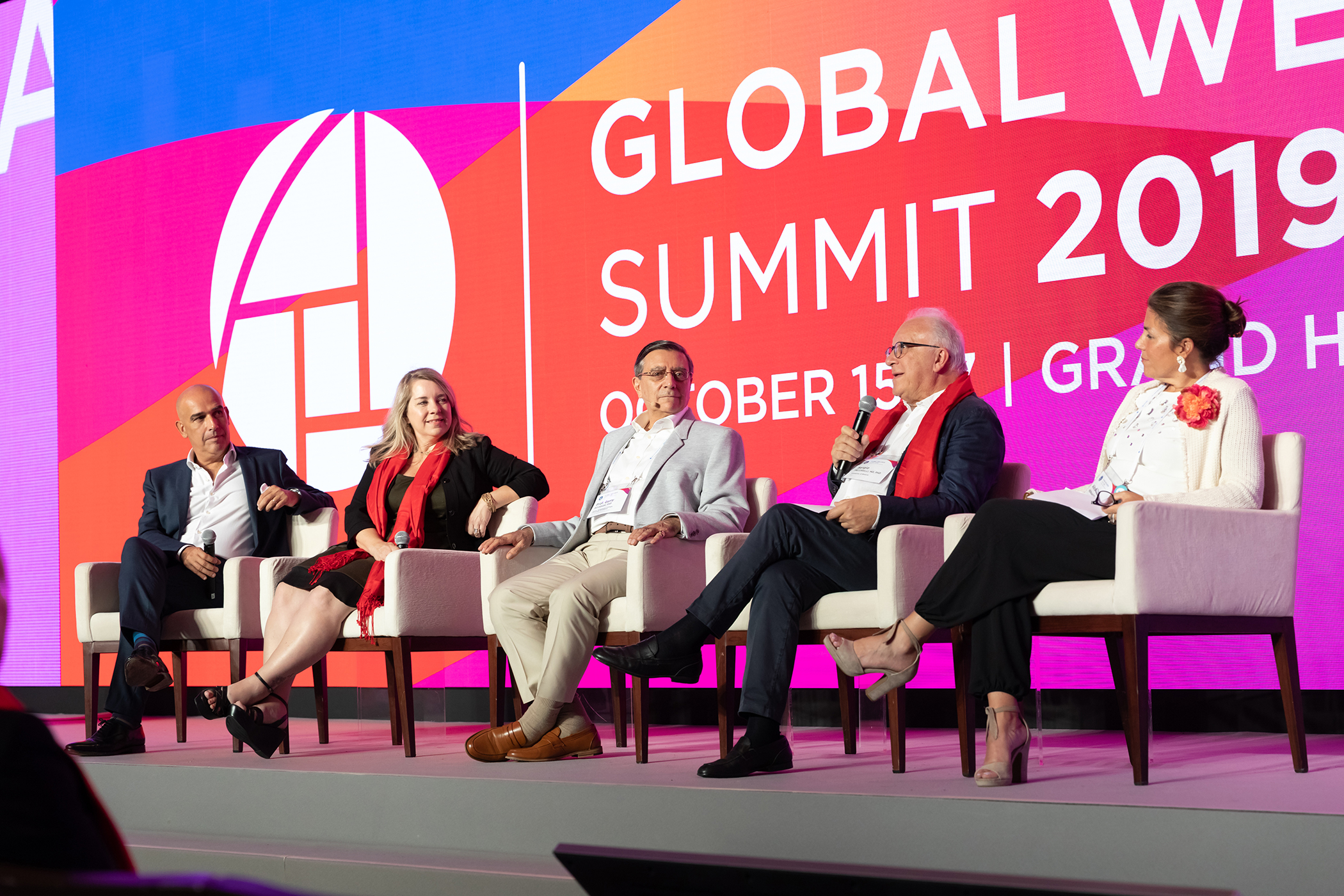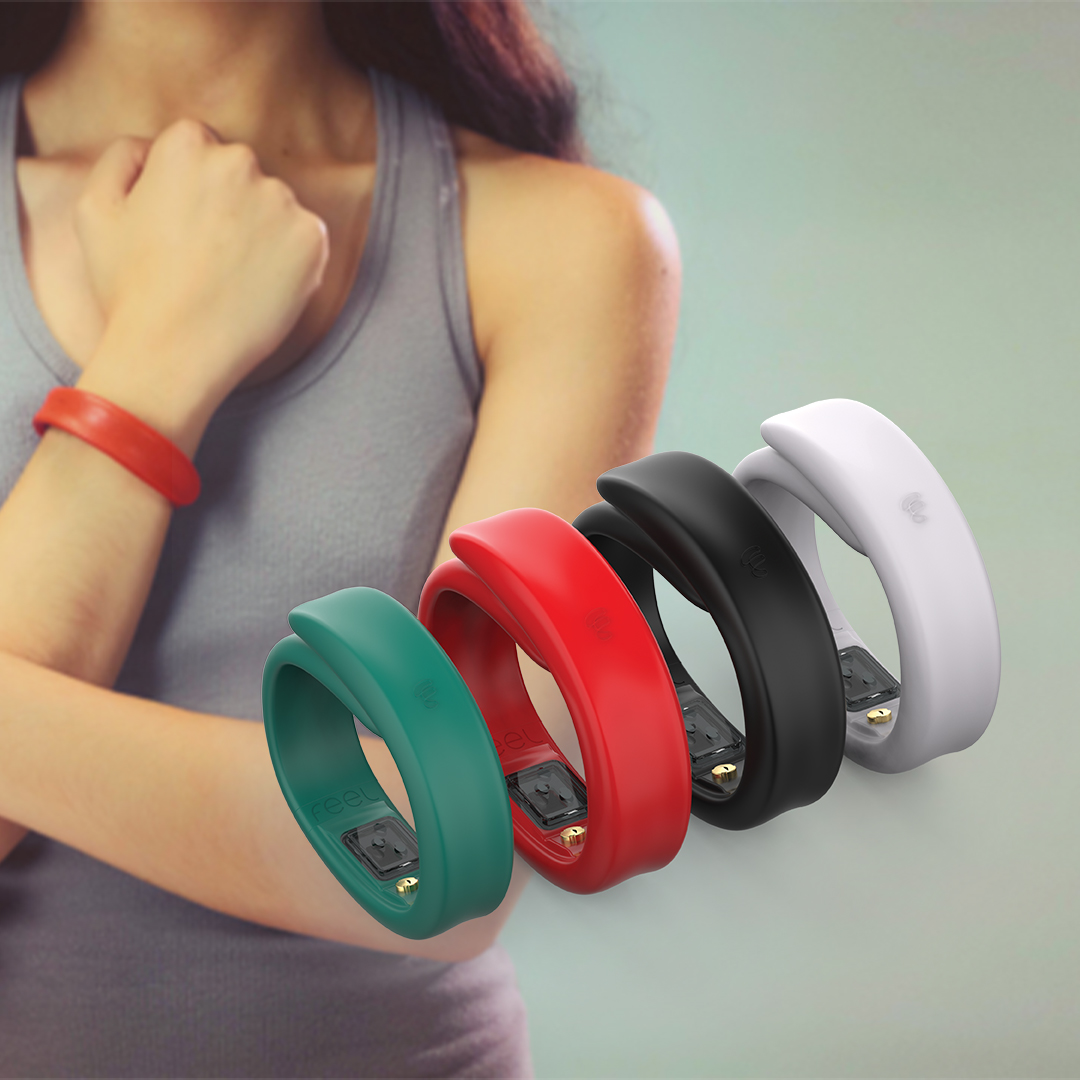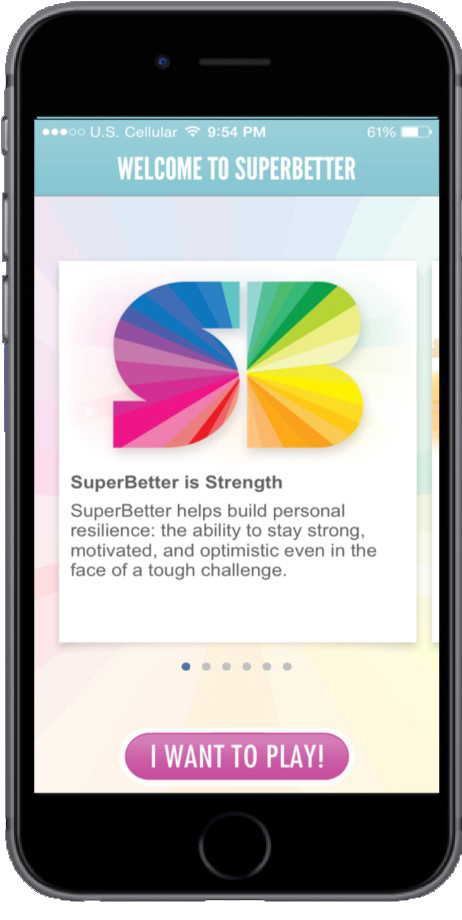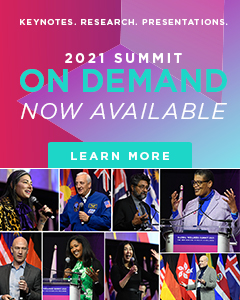Mental Wellness and Technology: Rethinking the Relationship
Mental tech health, via virtual care, wearables, chatbots and other futuristic innovations, is moving mainstream to support the 450 million individuals currently struggling.
By Rina Raphael
Mental health is moving far beyond the psychiatrist’s couch. Technological advancement has pushed digital therapeutics to the forefront of convenience—in people’s pockets, on their laptops and even within Facebook messenger. And with that, the category expands to include a suite of wellness products and services.
It’s a new ecosystem that sees individuals relying on a wide range of tools—chatbots, apps and digital support groups—to combat modern-day issues such as burnout, loneliness and anxiety. Combined with traditional medical models, it encompasses a holistic approach to psychological wellbeing.

The World Health Organization[1] estimates that 25 percent of all people will be affected by mental or neurological disorders at some point in their lives, with roughly 450 million individuals currently struggling with a condition. Unfortunately, care is far from the norm: Nearly two-thirds of those living with a mental disorder never seek help from a health professional.
The biggest barriers remain stigma, time, cost and availability. Many people wait weeks for a doctor’s appointment, provided they can even afford it. Others fear parking outside a therapist’s office, lest their neighbors see them. To that end, Silicon Valley boasts an impressive array of digital solutions to ensure more individuals receive discreet and flexible care. Nearly 10,000 mental health apps currently crowd the market, with meditation tools such as Calm evolving into billion-dollar companies.
And it’s not slowing down: The behavioral health software market is projected to reach $2.31 billion by 2022, growing 14.8 percent annually, according to a MarketsandMarkets research report[2].
THE (VIRTUAL) DOCTOR WILL SEE YOU NOW
Tech is first and foremost redesigning traditional care by improving access and customizing the experience. Virtual therapy apps such as TalkSpace, BetterHelp and Amwell give patients the ability to call, text and video teleconference with professional counselors on their schedule and in the comfort of their own home. These frictionless options, often a fraction of the price of clinic appointments, serve individuals with time-constraints or those in rural areas who lack access to care.
Online platforms such as Rethink My Therapy, which offers unlimited therapy for $60 a month, particularly appeal to millennials who want their medical appointments as easy as ordering in dinner. Millennials are far more likely to address their mental health than generations prior, with seven out of 10[3] saying they feel comfortable seeking help.
“They don’t want to see anybody, they prefer talking to people, and they need it to be very convenient,” says Richard Rosenblum, CEO of Rethink My Therapy. “This is the wave of the future.”
Other virtual therapy apps center on counselor matchmaking and addressing specific patient needs. Regain specializes in professional couples therapy, Pride Counseling serves LGBTQ individuals, while Henry Health targets black men. The newly launched Ayana connects marginalized communities with therapists from their culture, background and race.
Other virtual therapy apps center on counselor matchmaking and addressing specific patient needs. Regain specializes in professional couples therapy, Pride Counseling serves LGBTQ individuals, while Henry Health targets black men. The newly launched Ayana connects marginalized communities with therapists from their culture, background and race.
BRAVE NEW INNOVATION
Mental wellness wearables such as headsets and bracelets slowly see traction, though many are still in the early stages of clinical trials. Sentio Solutions recently announced Feel, an emotion-sensing wristband with integrated biosensors that monitors a user’s physiological signals throughout the day. Paired with an accompanying cognitive-behavioral therapy (CBT) app, it aims to help those suffering from anxiety and depression.

“We envision a world where technology understands when someone is going through a depressive phase or panic attack and provides support in their time of need,” says Sentio Solutions Founder and CEO George Eleftheriou, noting the Feel might prevent visits to the emergency room.
Tech is also rounding out care, filling in the gaps left by traditional models. These wellness solutions are not replacements for medical professionals but often act as supplemental or preventative care.
Mindfulness and meditation apps such as Headspace, Calm and female-focused Sanity & Self offer audio tracks to relax listeners and strengthen mental resilience. Oftentimes, they’re paired with breathing exercises, visual aids and journaling guides. Israeli social network Wisdo connects individuals struggling with mental conditions, as well as those overcoming difficult emotional situations.

Some apps take their cues from entirely different genres, as evidenced by the evergrowing anti-anxiety gaming space. Nearly a million people have played SuperBetter, an app that gamifies mental health upkeep. Players accrue points by persevering through stressful situations, completing breathing exercises and breaking bad habits.
Chatbots are also on the rise. Woebot is an AI-enabled “robot friend” who looks like Wall-E and engages users through uplifting or sympathetic conversations. The adorable digital therapist is now available in 120 countries, serving more than half a million people.
“We’ve been able to show that people develop an alliance with robots,” explains Athena Robinson, CCO of Woebot Labs, noting its success in conjunction with ongoing therapy.
Other therapies employ more futuristic technology. Mindstrong is an app that analyzes how users interact with their phones—how they type or scroll—to identify mood states. Its machine learning can reportedly detect a range of potential mental health patterns. It is now being tested on California patients[4] through the state’s public mental health system.
Meanwhile, virtual reality is used as an exposure therapy tool for PTSD survivors. This allows an army veteran to visually revisit the battlefield through a headset. A recent study in Frontiers in Psychology[5] found that individuals who participated in virtual reality therapy were more likely to continue and complete treatment than those who participated in traditional programs.

Virtual reality therapy is gaining traction in the US and specifically in China, where an estimated 90 percent of citizens[6] with mental health disorders do not receive treatment and the number of psychiatrists is four times lower[7] than the global average.
UK patients with an extreme, debilitating fear of heights (acrophobia) can access immersive virtual therapy through a public healthcare provider. One such available service is Oxford VR, which takes just two hours per treatment, versus six to eight hours generally required of traditional face-to-face treatment. With such tools, therapists can treat five times the amount of patients.
“We’re using technology to do the repetitive, tedious parts of therapy and enable the therapist to focus on the really important parts—triage diagnosis and care management,” explains Oxford VR CEO Barnaby Perks. The company is pursuing a clinical study exploring the treatment of psychosis and plans more programs as consumers more widely adopt virtual reality headsets such as HTC Vive and Oculus Rift. “The long-term goal is to be able to put this in people’s homes.”
Granted, tech isn’t completely replacing the human model. A slew of new companies reimagine the doctor’s visit by way of technology-aided services. Octave Health takes a hybrid approach by combining in-person therapy with virtual coaching services. Patients come in for therapy but are also paired with interactive digital programs to learn CBT skills. The digital services, says Founder Sandeep Acharya, help patients progress more quickly and ease practitioner workload.
Octave recently became one of the first behavioral health practices to ink a major insurance deal by becoming an in-network provider for Anthem Blue Cross of California.
“[Digital mental health] is a $500 billion category over the next decade,” predicts Acharya. While the industry might look crowded of late, Acharya simply sees it as evidence of growing opportunity. “We’ve seen a huge spike in patient demand… and employers are demanding that their insurance companies cover this category better.”
THE NORM TO COME
Mental health tech will move into the mainstream as cultural norms continue to shift. Millennials’ embrace of convenient treatment, as well as interest in self-care, will transform how employers, universities and local governments offer subsidized care. The ongoing public conversation on toxic workplaces and burnout is already pushing big companies to take action and realize that prevention is more affordable than treatment.
Frontiers
On-demand app Ginger.io enables users to chat with a behavioral health coach within 60 seconds of engaging with the platform. Should patients need more care, they are seamlessly escalated to professional therapy or a psychiatrist. The company now works with nearly 100 enterprises, including Sephora, Pinterest and Buzzfeed, supporting more than 400,000 individuals and their dependents.
Most consumers don’t rely on virtual care, but that’s changing rapidly, says Ginger.io CEO Russ Glass. “The next year will see a big spike in adoption of telehealth, both in the mental healthcare space as well, as primary care,” says Russ. “In this healthcare system, we just don’t have a choice. We have to be looking at ways to change the supply-demand curve.”
Celebrities are doing their part as well: A-listers ranging from Selena Gomez to Catherine Zeta-Jones have publicly discussed their mental health struggles. Olympian Michael Phelps starred in an ad campaign for online therapy provider Talkspace.

This shift might impact the entertainment industry. Meditation app Calm, which already works with celebrities such as Matthew McConaughey, is branching out into Hollywood. The California-based company plans on producing a number of shows and movies that soothe anxiety and boost morale.
There’s far more innovation on the horizon: Scientists are researching how AI can impact psychiatry and other areas of mental health, including patient diagnosis. Big tech is expanding voice tech’s role in healthcare, which means Alexa might one day offer a lot more than just the news and weather.
“Approximately 80 percent of care can happen via remote means,” stresses Glass, “and that just reduces all kinds of costs in the system.”
In the coming years, expect more wellbeing tools that work in conjunction with medical care. The new consumer might find themselves weekly teleconferencing with a therapist, then relying on a meditation app during moments of stress. Or maybe they’ll wear a bracelet that will warn them when a panic attack is forthcoming. The future will be full of both intrusive and feel-better tech readily available at an individual’s fingertips.
THOUGHT STARTER
Is big tech ready to take responsibility for its part in contributing to society’s mental health woes? Social media giants are taking notice and doing their part—or at the very least, benefiting from the perception they’re working toward solutions.
Pinterest launched a search tool that leads users who look for terms such as “work anxiety” or “stress” to moodboosting interactive activities. Facebook released time-management tools to help users limit excessive social media use, which has been linked to depression and feelings of worthlessness. Instagram is removing the “like” feature in part due to the psychological damage caused by the competitiveness of social media influencers.
“I struggle with anxiety,” Instagram CEO Adam Mosseri told journalist Laurie Siegel[8]. “There’s a question about where and how Instagram can play a role. Are we exacerbating it? If so, then how can we make sure that we don’t do that. But can we go further than that? Can we reduce someone’s anxiety?”
ENDNOTES
[1]Mental Disorders Affect One in Four People, World Health Organization, 2001.
[2]Behavioral/Mental Health Software Market by MarketsandMarkets, 2019.
[3]Survey: Stress, Stigma and Access Loom Large for Millennials by Marissa Lorusso and Sophia Barnes, Matters of the Mind.
[4]California Tests a Digital ‘Fire Alarm’ for Mental Distress, the New York Times, 17 June 2019.
[5]Virtual Reality for Anxiety Reduction Demonstrated by Quantitative EEG: A Pilot Study, Frontiers in Psychology, 24 July 2018.
[6]The Economic Burden of Mental Disorders in China, 2005–2013: Implications for Health Policy by Junfang Xu, Jian Wang, Anders Wimo and Chengxuan Qiu, 11 May 2016.
[7]In China, Mental Healthcare Goes Virtual by Christopher Magoon, Scientific American, 19 July 2019.
[8]Instagram’s CEO Opens Up About His Own Relationship with Anxiety by Laurie Siegel, Dot Dot Dot Media, 16 December 2019.
Copyright © 2019-2020 by Global Wellness Summit.
If you cite ideas and information in this report please credit “2020 Wellness Trends, from the Global Wellness Summit”.
For more information, email beth.mcgroarty@www.globalwellnesssummit.com.

